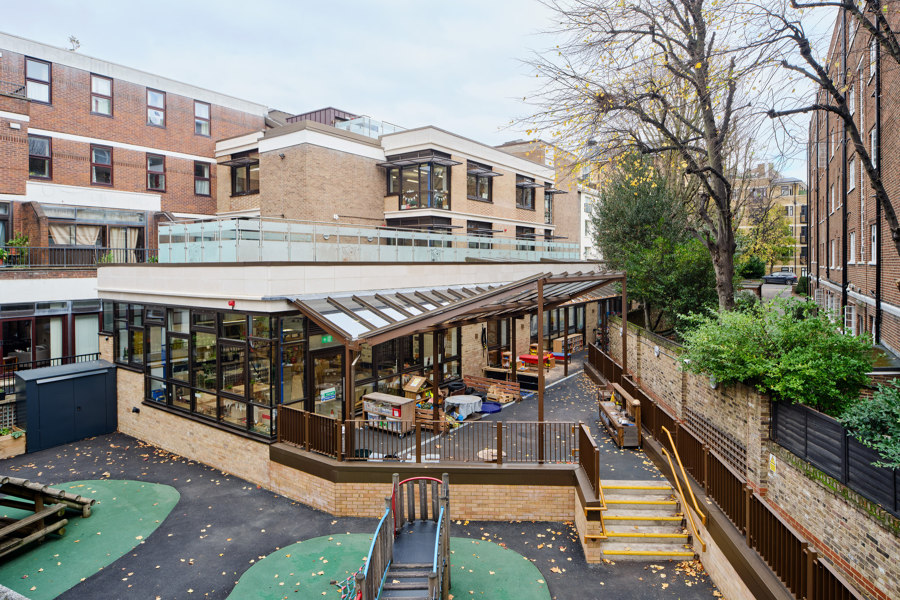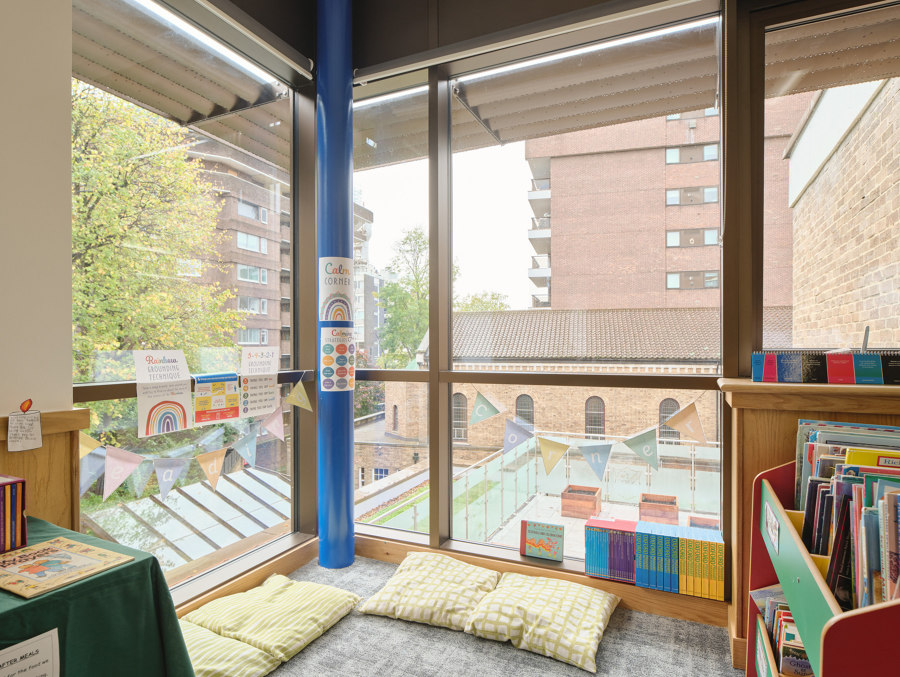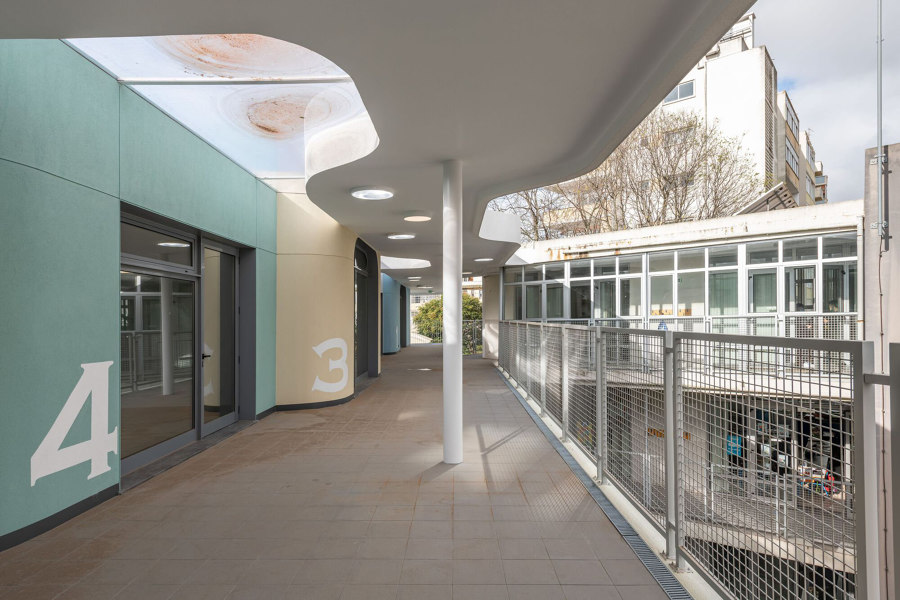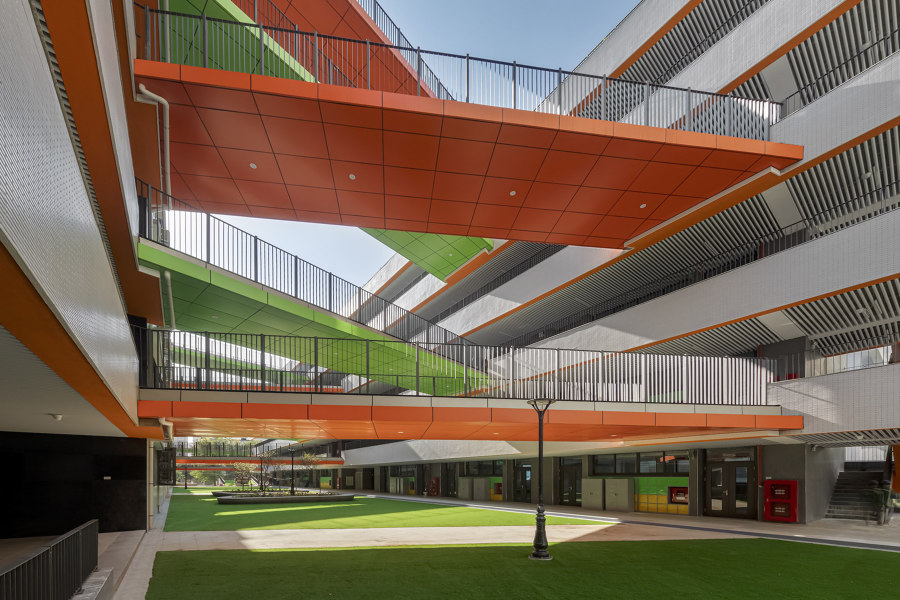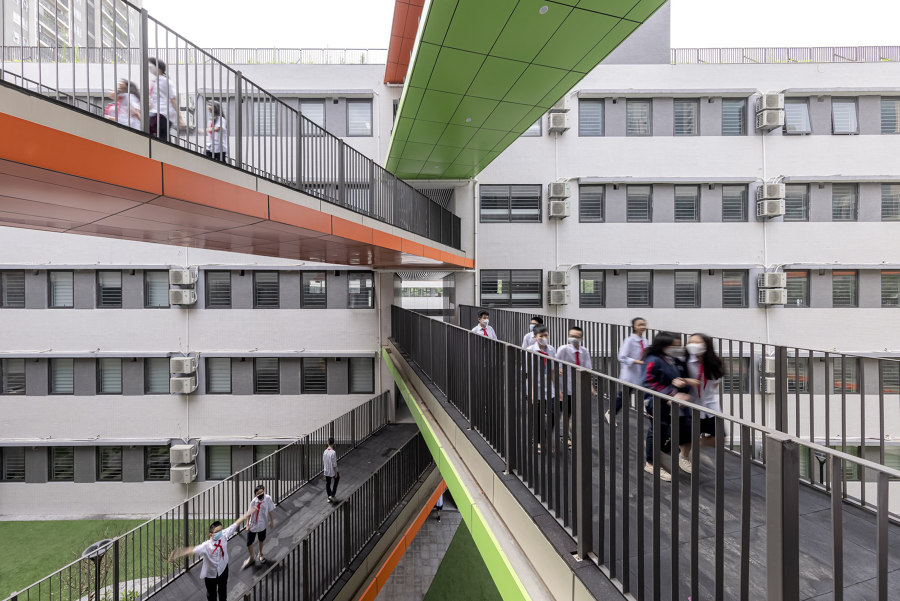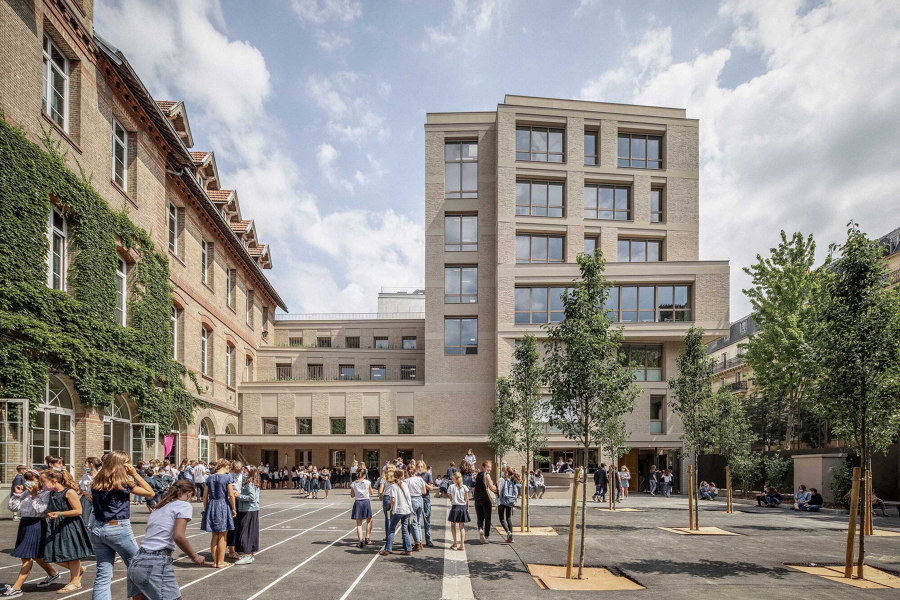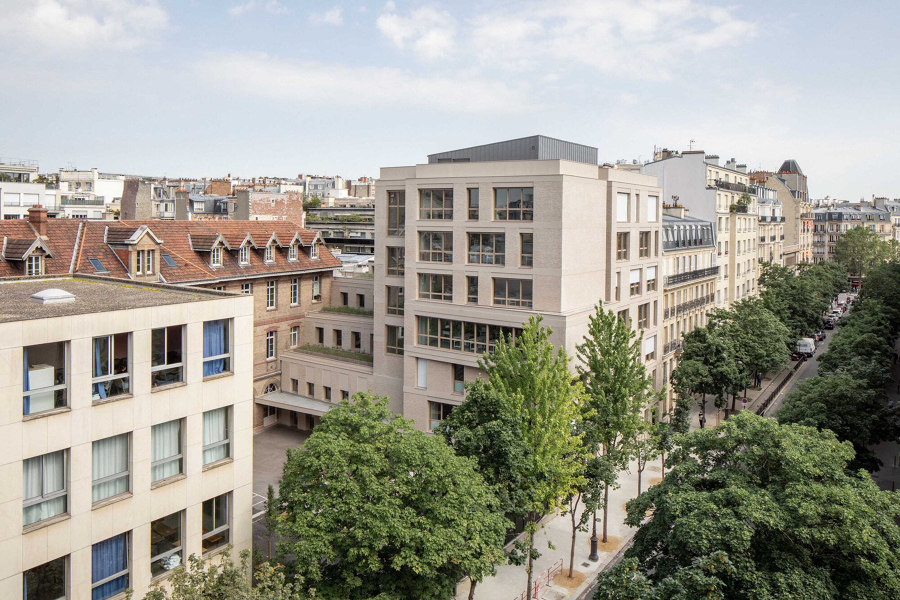Inner-city schools solving the problems of inner-city architecture
Text by James Wormald
22.05.23
With a lack of space to expand, these four inner-city schools with growing pains make light (and green) of their restricted urban environments.
Hanoi’s Tran Duy Hung School protects its ground-level green space from noise and humidity, while providing additional green and botanical learning spaces above on its rooftops. Photo: Chimnon Studio
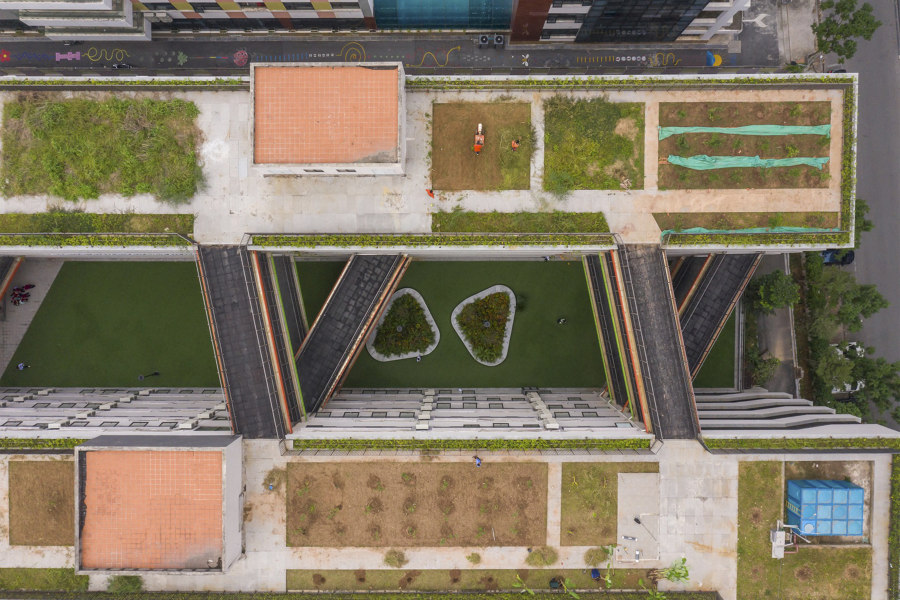
Hanoi’s Tran Duy Hung School protects its ground-level green space from noise and humidity, while providing additional green and botanical learning spaces above on its rooftops. Photo: Chimnon Studio
×I always consider myself fortunate to have grown up outside the city, where my ‘cross-country’ lessons, for example – a national right of hardship for 11-16-year-olds, were through actual countryside rather than the high street. For many children, however, modern school life is not so close to nature.
Already over-populated cities are continuing to expand, meaning more schools are suffering from the limitations presented by inner-city architecture including noise, air and light pollution; a lack of space, especially green space; restrictive budgets and building regulations resistant to change.
With innovative and considered design solutions, however, these four inner-city schools show the rest of the class how to work through their architectural answers and provide quality, green spaces for all.
St. Christina’s Primary School multiplies both outdoor space and interior natural light with two extra well-glazed storeys with outdoor learning terraces and sedum roofs. Photos: Simon Kennedy
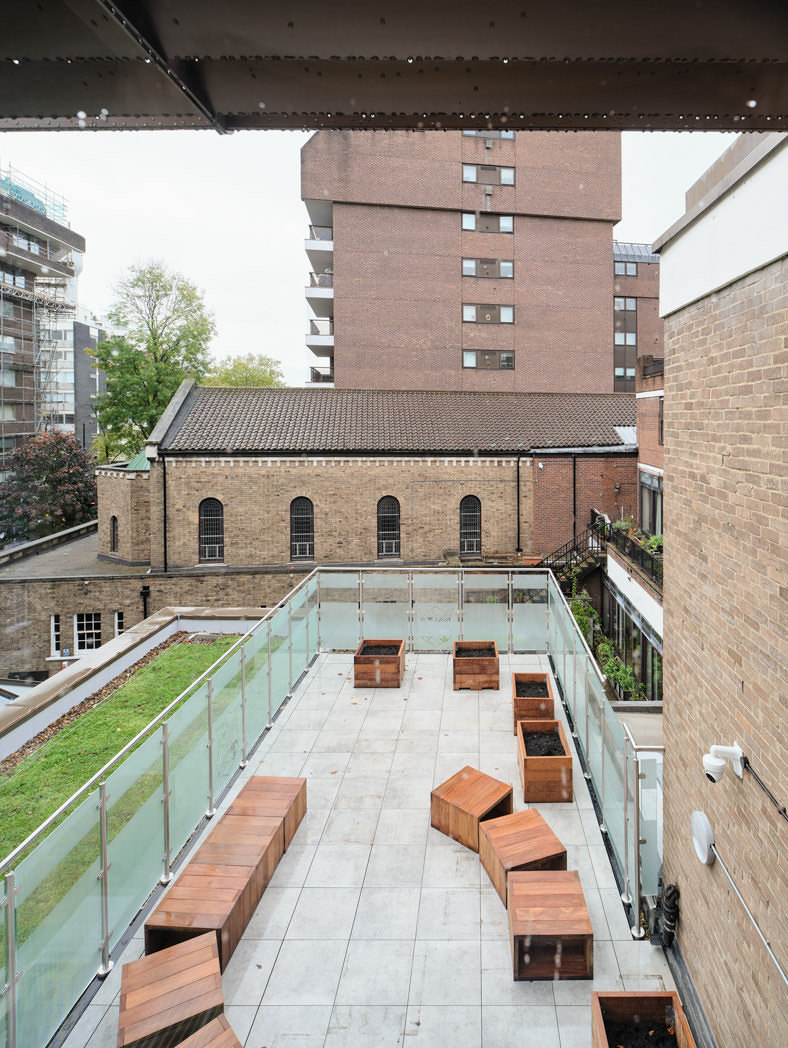
St. Christina’s Primary School multiplies both outdoor space and interior natural light with two extra well-glazed storeys with outdoor learning terraces and sedum roofs. Photos: Simon Kennedy
×St. Christina’s Primary School in London, UK, by Paul Murphy Architects
Located in a dense area of St. John’s Wood, London, St. Christina’s Primary School shares an extremely tight site with a Chapel and a Convent, meaning there was little to no room for expansion outside its existing footprint. Paul Murphy Architects’ plan, however, was the exchange a single-storey section for a three-storey extension.
The plan to stack additional storeys meant that no existing outdoor space had to be sacrificed, with ‘new roof terraces created on levels one and three for outside teaching, populated with planters – to be grown by the children – and sedum roofs,’ explain the architects.
No existing outdoor space had to be sacrificed
In order to counter the darkening of the now deeper existing interior spaces, meanwhile, ‘the change in levels across the ground floor permitted generous ceiling heights, punctuated by large roof lights,’ share the architects, which, combined with clerestory glazing, glazed side panels and full-heigh corner windows, ‘contribute to a spacious, light and airy learning environment.’
Brightening up the school day, the Grémio School’s terrace balcony corridors and accompanying curves and colours encourage outdoor travel between classrooms and other areas. Photos: João Guimarães
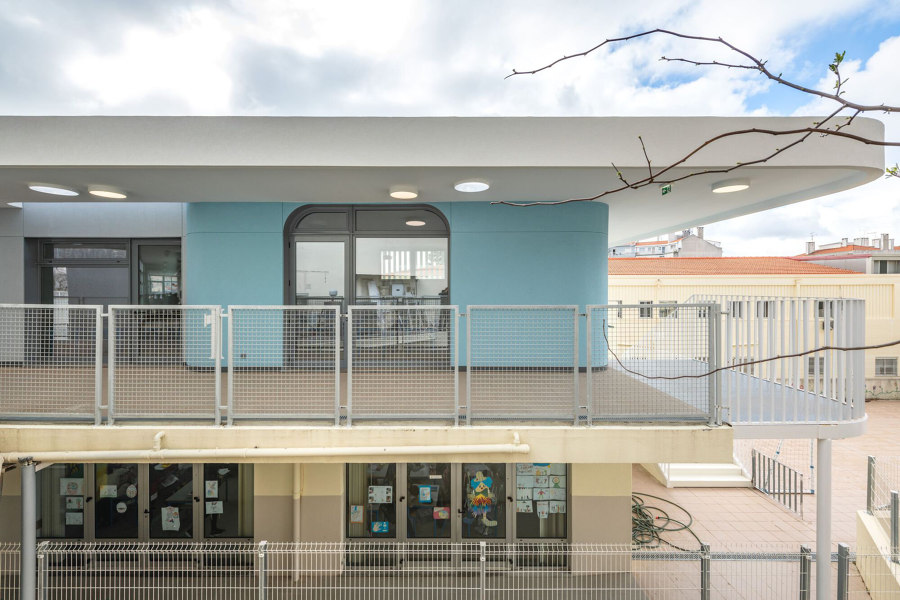
Brightening up the school day, the Grémio School’s terrace balcony corridors and accompanying curves and colours encourage outdoor travel between classrooms and other areas. Photos: João Guimarães
×Grémio School in Lisbon, Portugal, by Falanstério atelier de arquitetura
Green roofs were also chosen by Falanstério atelier de arquitetura to top an extended section of the Grémio School in central Lisbon. The low-maintenance solution provides improved thermic conditions for the school’s immediate surroundings and also manages to minimise the new building’s visual impact for its residential neighbours.
The arrangement of the classrooms doesn’t waste internal space with connecting corridors
The arrangement of the classrooms in the new building doesn’t waste internal space with connecting corridors but instead directs routes over exterior balconies, increasing the students’ continuous connection with the outdoors. ‘Aiming for serenity and harmony,’ explain the architects, the new layers’ stairwells and terraced balconies with colourful facades and weather-protecting curved canopies ‘focus on rounded shapes to reduce angles and edges and use a palette of pastel colours, both inspiring calm, socialisation and inclusion’ in the school.
Either in a shaded and ventilated green corridor (top), over connecting bridges (middle) or on rooftop garden steps (bottom), Tran Duy Hung students spend a lot of time outdoors. Photos: Chimon Studio
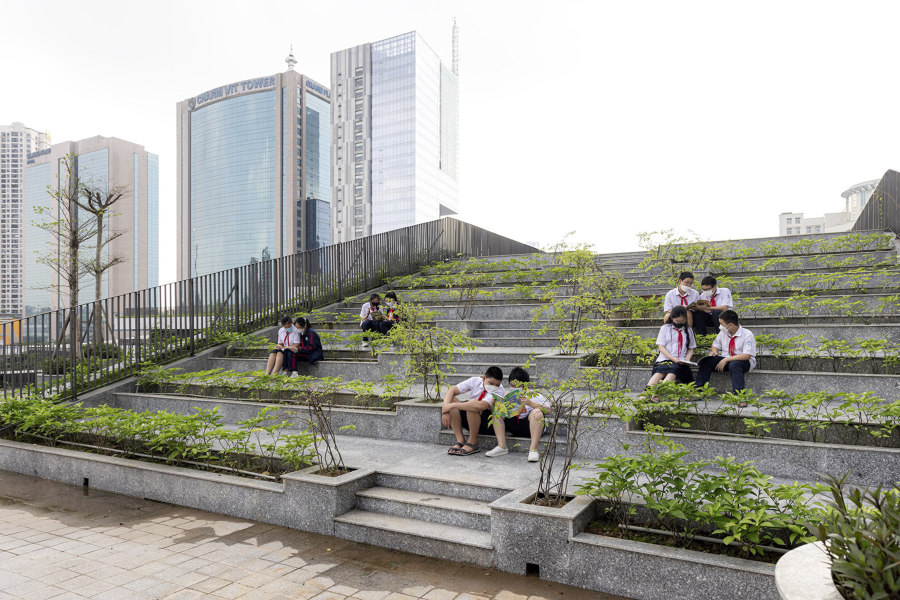
Either in a shaded and ventilated green corridor (top), over connecting bridges (middle) or on rooftop garden steps (bottom), Tran Duy Hung students spend a lot of time outdoors. Photos: Chimon Studio
×Tran Duy Hung Secondary School in Hanoi, Vietnam, by Sunjin Vietnam Joint Venture Company
‘While natural experiential spaces in inner-city schools are increasingly forgotten,’ explains the Tran Duy Hung Secondary School architects, Sunjin Vietnam Joint Venture Company, the school’s roof is ‘designed with the purpose of creating a green space and botanical garden for students. Maintaining the roof’s green spaces allows students to develop their experience and understanding of the natural world.’
‘The school is planned at the back of the land, far from the main road’
Densely populated with many high-rise apartment buildings, Tran Duy street in Hanoi is a fast-growing area of the city, and the five-storey school provides 44 classrooms for a similarly growing number of students. At its busy urban location in the hot, humid climate of Hanoi, ‘the school is planned at the back of the land, far from the main road,’ explain the architects, with the considered arrangements of its classrooms and communal spaces achieving optimal passive ventilation, natural lighting and ensuring maximum comfort and noise protection.
With its facade of handmade blond bricks, Notre-Dame des Oiseaux High School’s extension complements the traditional Parisian architecture surrounding it. Photos: 11h45
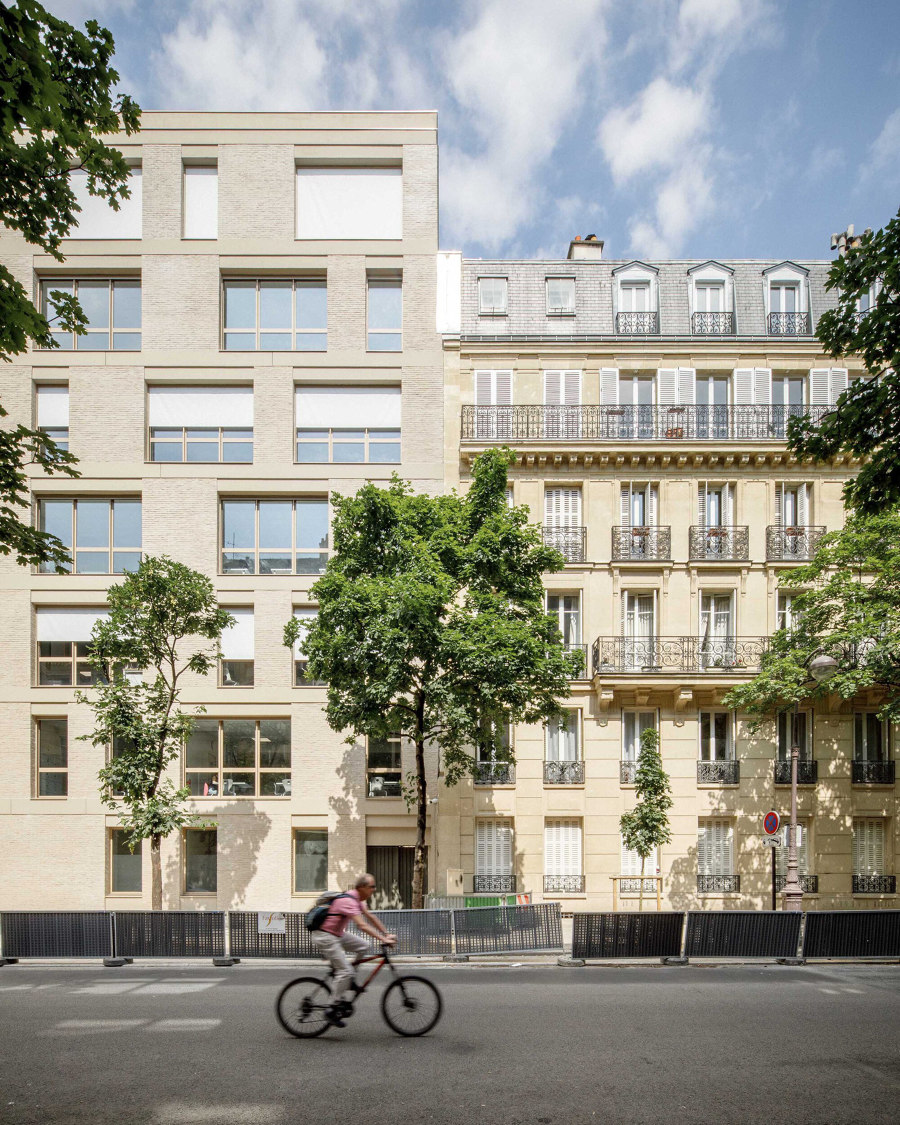
With its facade of handmade blond bricks, Notre-Dame des Oiseaux High School’s extension complements the traditional Parisian architecture surrounding it. Photos: 11h45
×Notre-Dame des Oiseaux High School Extension in Paris, France, by Bien Urbain – Atelier d’architecture and Fayolle Pilon architectes associés
Good for sustainability, the circular economy prefers adaptive reuse projects when it comes to making the built environment more usable, but when striving for the more efficient use of small spaces, new construction can sometimes represent the more sustainable option.
Faced with the regulatory limitations of a city such as Paris, France, the Notre-Dame des Oiseaux High School demolished an existing pavilion and replaced it with a six-storey extension that fits into the pre-existing 19th-century building’s framework like a skintight glove. ‘Defined by its simplicity and sobriety,’ explain one-half of the architecture team, Bien Urbain - Atelier d’architecture, the construction ‘looks for an inscription over a long period of time.’
The six-storey extension fits into the pre-existing 19th-century building’s framework like a skintight glove
The project’s ‘regulatory requirements led to the compact and efficient organisation of volumes’ to explore all the site’s potential while expressing a specific focus on masonry, explains the architects. ‘Its materiality finds kinship with both the establishment and Michel-Ange street,’ its handmade blond bricks reminiscent of the colour of Parisian stone.
© Architonic
Head to the Architonic Magazine for more insights on the latest products, trends and practices in architecture and design.

